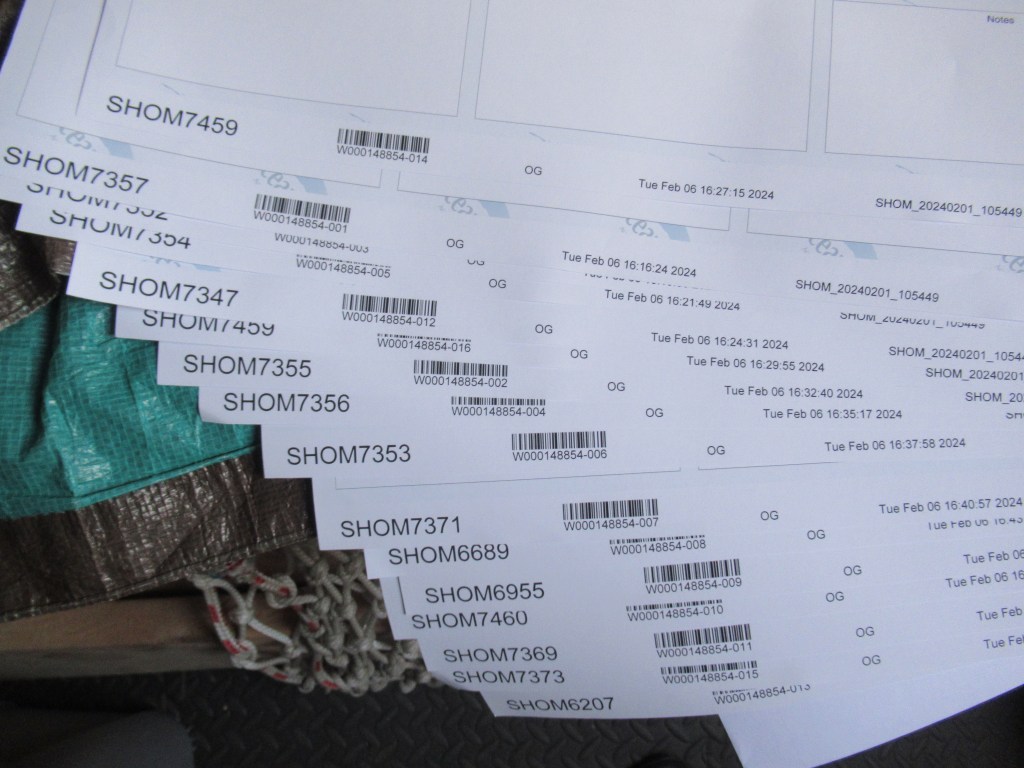Carnaval, La Paz and Marquesas Prep

What’s the best nation in the world?
A Donation.
I received my French Polynesia paper nautical charts yesterday. But don’t worry, you can still contribute, they were bought on credit. I’ve attached a couple pictures so you know they’re real. Plus, it’s hard to top the romance and dreaming for an armchair sailor of studying nautical charts of distant lands. Sampaguita does not have an electronic chart plotter. I do have Navionics on my phone, but many (most?) of us have broken a phone or dropped one overboard, so that’s a risky dependency. I have charts on Open CPN, a free crowd sourced program, for a back up too. But computers also die and the salt water environment can easily make all electronics stop working forever. I know this from experience. I have GPS devices, but I also have a sextant and the tools to celestially navigate. Plus, focusing on electronic devices while trying to have a natural sailing experience removed from the burdens of a modern, high tech, and complicated world is too painful for the spirit. So, I bought some French charts, because they will be the most up to date. And whether you’re analog or digital, it all costs.

If that is all over your head, I will also be purchasing some travel health insurance soon, as I understand it is a requirement for entry into French Polynesia for the time I need to be there. I’m certain that can resonate with everyone. It will be of the minimal variety, enough to suit them. I am presently uninsured and I am well aware that a single-handed sailor suffering a medical situation at sea doesn’t stand much of a chance. No insurance will help at that time. Someone asked me once if I was afraid of pirates. I explained that the chance of choking to death was much more real.
Sampaguita is paid up on her registration through June 2025. I had to have those documents Expressed to me which cost nearly as much as the registration. My kayak warranty parts were sent snail mail, not priority as I was told they would be. They landed in Mexico City on January 12 and haven’t been heard from since. They offered to resend them, but I would have to pay for the Express shipping. So that was done yesterday.
Google Fi shut off my data, but my phone still works and my SMS texts began coming through, so that’s good for now. I joined Club Cruceros de La Paz for $10 which was a bargain to be able to use their wifi. So that’s how I’m posting this right now. That’s where I have been doing my marathon researching. I may move to the Tossible Digits service before I depart for Marquesas. Paying for Google Fi without data access isn’t a very good deal. Plus, I’ll be at sea where it won’t work anyway. Tossible Digits will allow me to keep my number and I will receive messages and SMS texts (no pictures or emojis or I won’t receive them) via email and their website. It will cost considerably less. Then I can get a local SIM card (I read that Vini will be the best in FP) which will give me data through any towers and calls can be made via Whatsapp. That is if I understand everything correctly.
There is no shortage of ways to make your contributions count towards the heart of the expedition. If you like to help those who help themselves, I have been writing and submitting stories to publications too. ‘Lectronic Latitude presently continues to publish some of my Resourceful Sailor pieces, which I am thankful for, but payment amounts to about $600 a year, if I’m lucky. (About $5 per hour.) I have asked for an increase multiple times, but to no avail. I have submitted some pieces to other, better paying publications but they can take up to 60 days to even say, “Thank you for your submission, but we are declining to publish.” And they all demand you do not submit to other publications simultaneously. It’s a bit of a power play. So that progress is slow and therefore, not very profitable. In talking to cruising veterans, they have explained how writing is considerably less valued than it was in previous times. I get it, the world is ever changing. It’s tough for us dinosaurs. Such is the way of a struggling artist, or in nautical terms, a sinking artist.
Think of sending a few dollars as similar to tipping your wait staff. You are feeding on the content and subsidizing the publication in return. I realize it’s easy to avoid as an anonymous and distant reader, but I appeal anyway. If you’re keen to support a writer, an explorer, and a sailor who is not doing it in the modern cookie-cutter style, this is an opportunity to be part of something fantastic and out of the ordinary. Thank you so much.
And as always, a huge thank you to those who are already participating.
PayPal or Zelle: wheelersf@hotmail.com
And now a missive:

Carnaval in La Paz
I did a walkabout of Carnaval in La Paz on Sunday night. I had been through on Saturday afternoon on my way to grocery shopping, but it turns out to really be a night time thing. Out at anchor you can hear and see it going on until one or two in the morning every evening.
In La Paz, Carnaval takes place along the Malecón. The Malecón is the waterfront. There is the beach that stretches for a couple miles (excuse me, a few kilometers), and then there is a wide sidewalk/park along that. There’s usually a queue of people waiting to get their picture taken next to the big block LA PAZ letters that are characteristic of Baja towns. I have a few of pictures from other towns in recent blogs and then I got bored with it. Then there is the street and on the other side of this are the restaurants, hotels, and shops where you can get souveniers saying “My mom went to La Paz and all she got me was this stupid t-shirt.“ But in Spanish. Just kidding, I don’t know if that’s a thing, but you now know what I mean. In San Francisco you have Fisherman’s Wharf. In New York you have Times Square. In Seattle you have Pikes Place. In La Paz you have the Malecón.
For Carnaval, they shut down the street and line it with games, concessions, and carnival rides. Very similar to the midway of the Otsego County Fair in central New York that I used to show chickens and sheep at. Except way bigger. Two kilometers bigger. The games are very similar. Shoot the bottles, roll the ball, win big soft toys and tapestries of your favorite pop artist as prizes. The concessions are similar to, but with more Mexican flavor. Pun intended. Meat on a stick. Corn on a stick, Cotton Candy, Papas Fritas. And a bunch of other things I’m not sure what they were. The concessions were mostly run by regular people, while the games and rides were more operated by what we used to call “carnies.” You can tell by the hard living look they have. It’s not an easy job. Pays crappy, you work all night. Showers are few and your bathroom is always a blue house. But you don’t need a resume, a degree, and your boss asks few questions. It’s kind of the Group W bench. They gotta live too.
Tecaté tents every two hundred meters offer canned beer for 35 pesos (presently a touch over two dollars US), but no worries, if you don’t want to overpay for beer, it turns out you can buy a twelve pack at the regular store and just take it in. There is no entrance gate. No admission. You come and go as you like. There are police around, but they seem to just make sure nobodies getting violent, or too outwardly brash, or trying to drive on the street, not to enforce a bunch of rules and behaviors. At least that I noticed.
And there were thousands of people. It is a family affair, but not puritan. There were lots of teenagers and twenty somethings involved in the classic mating rituals of these kind of public events.
The interesting parts to me and that really set it apart from the carnivals of my youth (because I totally steer clear of that stuff as an adult) is the volume and the music. It was loud. Every game truck had their own sound system and Mexicans tend to turn it up loud. I remember this at the baseball game in Bahia Tortuga too. And they seem to focus on the mid and high frequencies. (which are the most damaging) But that might also be because they don’t have the best equipment. There were about eight live music stages along the Malecón. These had your more “professional” acts which ranged between Mexican takes on the American/Brit pop music machine, or Ranchero, or some other genre I can’t name. More polished, costume wearing, popular groups. I didn’t see anything while I was there that was very interesting, but I’m over that schtick anyway.
What did spark my interest were the street bands interspersed between the stages. As soon as the volume tapered off from one group, you moved into the sound space of another. A few had costumes, but most were just wearing unpretentious street clothes. I don’t know the name of this genre, but it is the classic Mexican music you so often hear that is not based on the American/Brit music wave. But I hesitate to call it traditional, because I don’t really know what that is in Mexico either. They are also not all created equal, which is true anywhere. I love that they are made up of mostly instruments considered “uncool” in America, but obviously super cool in Mexico. My favorite group was a quintet. They were killing it. The bigger groups could be impressive too, but they also tended to get a bit sloppy, and were outstretching their talent pool, so they didn’t seem to be captivating people as much.
The quintet consisted of the following instrumentation, which seems typical of the genre. A Sousaphone player (which is the same thing as a tuba, except for standing), a clarinetist, a trombonist, a bass drum/cymbal player and a percussionist with a snare drum, set of timbales, a variety of cowbells and a cymbal. (The bigger bands would have trumpets.) The rhythm section was feeling it and it made all the difference. They were surrounded by people dancing and even the passing crowds were bopping as they went by. Who knows what they were called. They weren’t putting on any “stage show”, no costumes, no worries, no rush. Just making people dance. They would be checking their phones in between songs. (Yes, that plague is worldwide. Go by any shop and see the bored employees on their phones.) No taking themselves too seriously at all, which is so refreshing. But, I repeat, killing it. (Musicians where I’m from take themselves way too seriously and seem to expect others to as well.) They were the highlight of my abbreviated Carnaval experience. Out at anchor, I am a couple kilometers away, but you can hear the Sousaphones honking late into the night. So cool. Those guys (yes, guys) have some serious chops and mighty lungs.



Did you get my e mail? M. I assume no one was on those boats ?
LikeLike